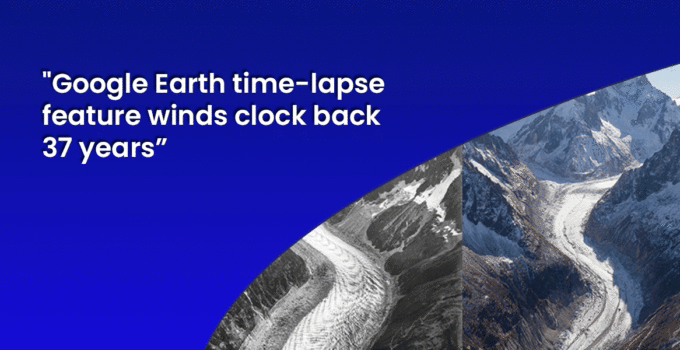

- Google time lapse tool update#
- Google time lapse tool archive#
- Google time lapse tool software#
- Google time lapse tool free#
Now, Google Earth's latest update to "Timelapse" gives viewers a glimpse into the past, allowing them to watch landscapes evolve from 1984 to 2016. More news from Carnegie Mellon University: lot has changed in the past 32 years: average yearly temperatures increased, glacier have retreated and nearly three billion more people wander the planet’s surface. They are continuing to work with Google scientists to increase access to additional imagery from Landsat and other satellite programs. In addition to Sargent, Dille, and Bartley, computer science student Richard Hofer, Robotics Institute intern Saman Amirpour, and Illah Nourbakhsh, professor of robotics and director of the CREATE Lab, have contributed to this project, which is funded by Google.

Videos demonstrating how the time-lapse tool can be used to explore phenomena such as deforestation, urban growth, and drying seas can be viewed here. “Exploring the data is now much faster-hundreds of times faster than it used to be,” he adds. “You can continue to argue about why deforestation has happened,” he explains, “but you no longer will be able to argue whether it happened. Sargent predicts that the enhanced access to satellite imagery will help ground public discussions about land use, climate change, and environmental policy. Sargent says the success of that project led directly to the effort to create a tool for accessing Landsat and other satellite imagery available through Google Earth Engine. One of the first applications of the Time Machine technology was to 12 months of imagery from NASA’s Moderate Resolution Imaging Spectroradiometer, or MODIS, satellites.
Google time lapse tool software#
Sargent, along with Carnegie Mellon colleagues Paul Dille and Chris Bartley, developed algorithms and software architecture that made it possible to shift seamlessly from one video portion to another as viewers zoom in and out of the imagery.

GigaPan Time Machine, developed with Google’s support, took advantage of the HTML5 language incorporated into such browsers as Google Chrome to extend GigaPan into the realm of video. Google, NASA, and Carnegie Mellon previously collaborated to create GigaPan, a technology for capturing a mosaic of hundreds or thousands of digital pictures and stitching those frames into panoramas that be interactively explored via computer. “Together we can now offer an intuitive, effortless method to explore the planet in space and time.” “The sheer volume of visual data is daunting to explore by conventional means,” says Rebecca Moore, engineering manager of Google Earth Engine.
Google time lapse tool archive#
When combined with Google Earth Engine’s massively parallel computation power, the Landsat image archive is transformed into a set of seamless, zoomable videos easily accessible from a modern Web browser. The new tool for Earth Engine, based on Carnegie Mellon’s GigaPan Time Machine technology, takes this access to another level. Google Earth Engine has already amassed more than 1.5 million Landsat images of Earth and this is growing by thousands of images per day as new satellite data is collected. Google has improved access by building the largest library of Landsat imagery on hard-drive storage, Sargent says.

But accessing that data-measured in petabytes, or quadrillions of bytes-has long been cumbersome, says Randy Sargent, a system scientist in the Robotics Institute’s CREATE Lab and a visiting researcher at Google.
Google time lapse tool free#
The researchers have adapted their existing GigaPan technology for interactively exploring time-lapse imagery to create a tool that enables the public to easily access the massive amount of images collected by the NASA Landsat program between 19.įor the past 40 years, the Landsat program has continuously collected imagery of the Earth’s surface and, since 2008, the USGS has made that imagery available free to the public. Users can zoom in or out on any spot on the globe and move back and forth in time. Httpv://This new capability within Google Earth Engine enhances the public’s ability to view the massive amount of imagery collected by the Landsat program between 19. Researchers at the Carnegie Mellon University Robotics Institute, working with colleagues at Google and the US Geological Survey (USGS), have adapted their technology for interactively exploring time-lapse imagery to create a tool that enables anyone to easily access 13 years of NASA Landsat images of the Earth’s surface. CARNEGIE MELLON (US) - A new capability within Google Earth Engine makes it possible to witness deforestation unfold in the Amazon, see the Aral Sea’s water levels rise and fall, and watch Las Vegas expand.


 0 kommentar(er)
0 kommentar(er)
